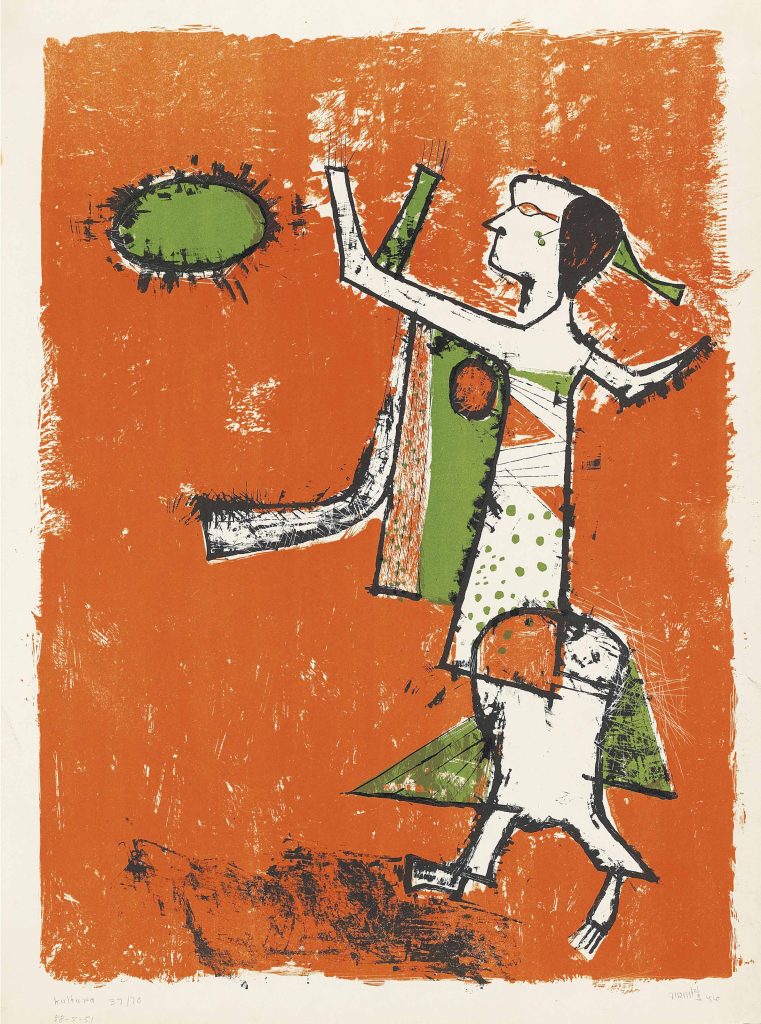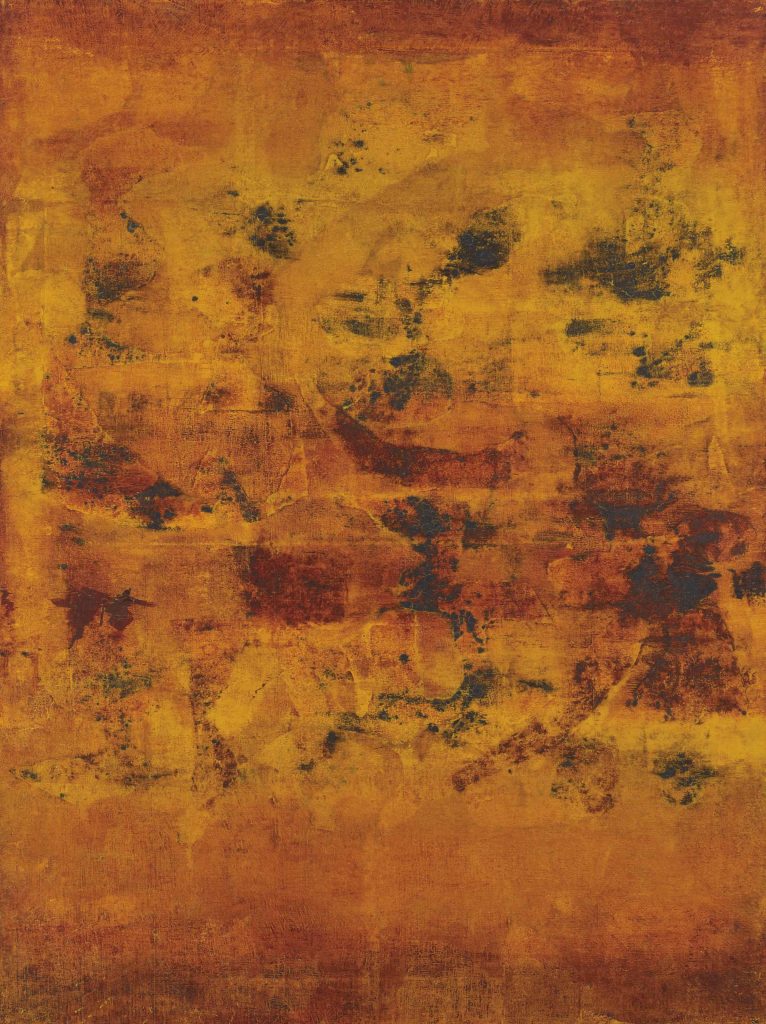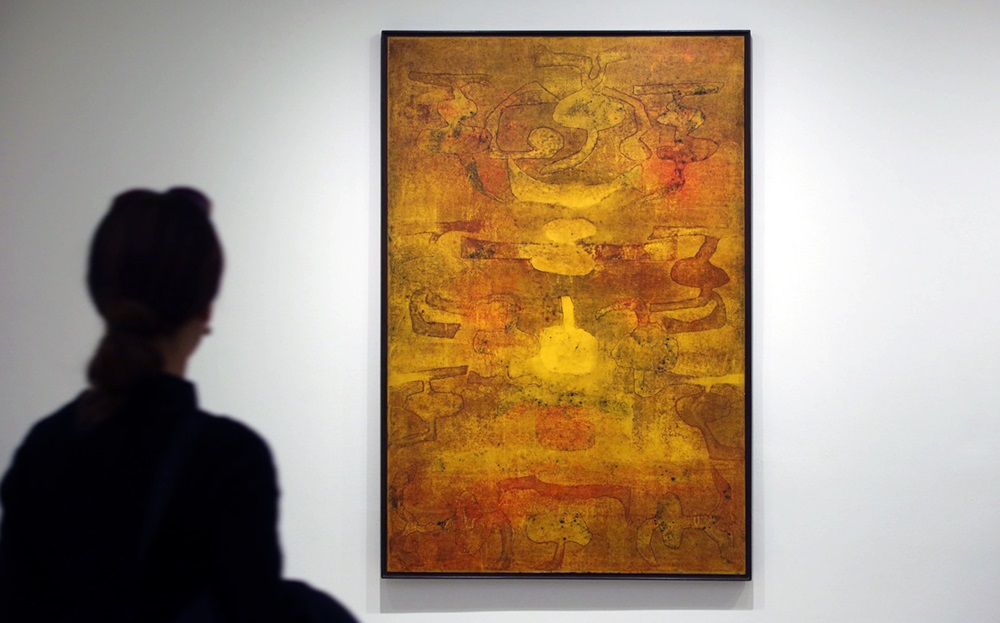Art always liberates us from the odd of mundane struggles and expressions. The Art Critique Robert Hughes called ‘Art needs to hold us as a water hold in a vessel; Artist Gaitonde brought that idea into the Canvas a long time before. That’s why the curator named Gaitonde’s retrospective show in Solomon R Guggenheim Museum, New York ‘V. S. Gaitonde: Painting as Process, Painting as Life, in 2014. This title tells about Gaitonde, an Artist and a leading figure in an ‘abstract’ history of Indian art.
Gaitonde’s life and artwork narrate the story of art liberating the life of an artist from the working class life to other strange locations of creative dynamism. V S Gaitonde is an artist who paints as Process And as Life. These ideas are reflected in Gaintonde’s work and life, as Robert mentioned about the ‘Vessel Holding the Water’ for a long time. That impression of the water goes deep inside the paths of the vessel; when we hold something for a long time, that makes an abstract image inside us.

When the art market turned to Indian artists, Gaitonde was the first to break the record; in 2013, his untitled painting fetched 3.7 million dollars at a Christie’s debut auction in India, which brought the worldwide attention to India, and Gaitonde’s artist body of work. V S Goitonde brings life’s stillness and meditative appearance into a gloomy canvas.
Gaitonde was born in 1924, in Nagpur, Maharastra to Goan parents. He finished his formal schooling at the J.J. School of Art, Bombay, in 1948. In 1947, the unbeatable late F N Souza co-founded the ‘Progressive Artist Group’, of which Gaitonde was invited by the founding members, FN Souza, SH Raza and MF Hussain. The members of the Progressive artist group break the rules and create something new. This idea brings many artists together, making something new: an avant-garde movement of Indian art. The artists from the Progressive art group questioned colonial academism and cliched Indianness, which brought both colonial period Indian- and British artists. This movement set a path for Indian artists to carry international attention to Indian art and artists, setting the pace for today’s vibrant art environment.

“I work as an individual. I do not have a scientific point of view. It is mostly my total experience of life [and] nature that comes through me, manifested on canvas. Every painting I do is a miracle. My sincere belief in life, truth, God, whatever it is, prompts me to paint, say Gaitonde.
‘By contrast, Gaitonde’s sensual abstraction is more ambiguous. However much the luminous forms suggest letters or ideograms, they remain abstract fragments. The livid orange and black fungal smudges wreath it in an air of decay as if it was rotting down to its constituent parts – a picturesque ruination. Yet Gaitonde described his painting as non-objective and said that his principal interest was the arrangement of colour, line and form without literal or metaphoric reference. The challenge for any artist following this path is to prevent the mark from being read as representing something else, be it a letter, a figure or simply creating the illusion of real nine space. It is precisely this threshold that Gaitonde’s work explores. There is a sense in his paintings that the marks before us are right on the edge of organising themselves into something recognisable, but they never entirely do. This visual ambiguity breathes life into the work, as written in the Vadehra Art Gallery catalogue in the 2006 show.
The way Gaitonde use symbols and calligraphic elements to create the mood or the abstract is the break in the pictorial narration and the practice of seeing. The artist’s practice of seeing the world is also a matter of seeing that artist’s work. Gaitonde’s early study of Zen Buddhist art influenced him to produce abstract narration; he combined two distinctive areas, like Zen philosophy and calligraphy. Gaitonde’s work progress is a method of understanding the visual feast inherent in the structure that comes through the stream of consciousness, making his composition predictable or melancholic.

Courtesy: Fortune India.
The artist’s intuition is not to finish a canvas but to continue forever, to the end of life, to meet the eternal and meaningful silence of the beautiful life through a slowly moving brushstroke with paint. That is a blend of mist and depth of a landscape, an illusionary night vision through the trees. Through Zen philosophy and paintings, Gaintonde reached the spiritual sublimation reflected in his life and artworks. What he sees in this world is brought to it as an underwater visual experience; he transcends it as a visual feast. He never focused on finishing the work but on the painting process; that mysterious and meticulous process dragged him into abstraction. Finally, Gaintonde removes the ‘abstraction’ with a palette knife that helps him control his journey on the canvas. Gaitonde’s strong artistic practice is visible subtly, as is how the symbolic element brings him into a lyrical composition.
Through a brilliant manipulation of form, colour and technique, he can transform essential ingredients into platforms of spiritual introspection. The textural structure with the interplay of colour in Gaitonde’s paintings is the central device in the works. The mysterious ‘self’ in the picture is hieratic but never insistent, as written in the Vadehra Gallery Catalogue.
Manjit Bawa’s Rounded Forms are a Conflux of Sufi Poetry, Spirituality, and Music





